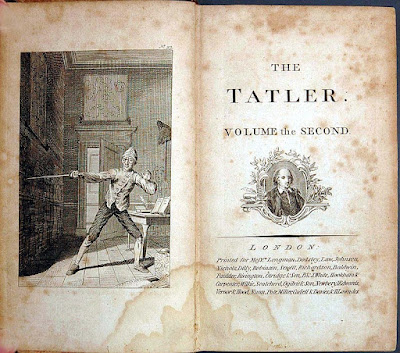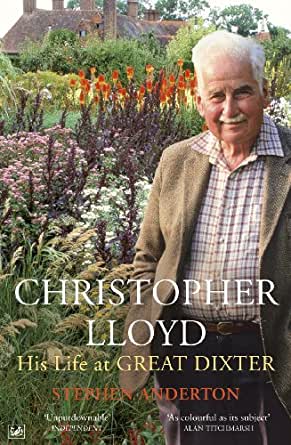A Very British Scandal review – Claire Foy is
masterful as the ‘dirty duchess’ out for blood
Buckle up and enjoy the ride! … Claire Foy as the
Duchess of Argyll in A Very British Scandal.
The crowd outside the divorce court screamed ‘Slut!’
But Margaret of Argyll would not be cowed by them, the judge or the explicit
photos – as this mean, lean drama brilliantly shows
Lucy Mangan
@LucyMangan
Sun 26 Dec
2021 17.00 EST
Well NOW
it’s Christmas. Sarah Phelps has delivered. Not an Agatha Christie adaptation
this time but an original drama, A Very British Scandal (BBC One), about the
notorious case of Argyll v Argyll – the only one any erstwhile law student ever
remembers (and I speak from experience). This is thanks to the fact that it was
a vicious divorce case between the Duke and Duchess of Argyll involving
multiple allegations of infidelity, one of which was attested to by a photo of
the Duchess fellating a man whose face was not visible in the picture but who was
not her husband. The duke had various measurements taken so this could be
proved in court. The duchess was identified by her pearl necklace. No, really.
It’s
surprising that no one has brought the story to the screen before now. Here it
is a companion piece – or perhaps furtherance of what seems set to become an
anthology series about historical media frenzies, national prurience and social
hypocrisy – to 2018’s A Very English Scandal, about the Jeremy Thorpe affair.
The Argyll
case (or the ‘Headless Man affair’ as it was also known, thanks to the photo
that quickly became infamous) of course provoked a media storm. A Very British
Scandal opens in 1963 with the Duchess (Claire Foy, most recently seen on the
small screen as the Queen in The Crown and here bringing the same masterful
skills to another aristocratic but wholly different character) facing the
screaming abuse of a crowd (“Scum!” “Slut!”) as she enters Edinburgh’s court of
session to open divorce proceedings. Inside, the Duke of Argyll (Paul Bettany)
offers her one last chance to end things quietly “Because I’m an honourable
man. You’ve played a spirited game but we both know you haven’t the stomach for
this.” The look on the duchess’s face suggests we should all buckle up to enjoy
the coming ride.
We flash
back to 16 years earlier, when committed socialite Margaret Sweeny (nee
Whigham, the spoilt only daughter of a fabulously wealthy industrialist) who is
rumoured to have had affairs with everyone from David Niven to Prince Aly Khan
and is about to divorce her first husband, meets the dashing Captain Ian
Campbell, holder of the Argyll title and lands. They find their interests align
quite nicely and – once he’s divorced from Louise (his second wife and mother
of his two sons) – get hitched.
At first it
seems a good match, if only in the sense that they are as monstrous and self-involved
as each other. They become the Duke and Duchess, move to the family pile in
Inveraray and she pays for everything from the restoration of the castle to the
final bills for Louise’s fur coats.
Fairly
soon, though, the duke reveals himself to be a violent, vicious drunk.
Margaret’s own essential viciousness serves her well. She remains uncowed by
her situation and by the end of the episode we see her forging letters from
Louise claiming that Ian’s sons aren’t his, to secure her place at Inverary which
would otherwise pass to them.
A Very
British Scandal has been billed – I suspect because anything involving a woman
and sex in The Past must – as a feminist retelling of the Argyll marriage
divorce, but in fact Phelps doesn’t lean too hard into that. Yes, there are
moments when the likes of shit-stirring frenemy Maureen (Julia Davis,
simultaneously lightly and deeply malevolent, as is her special gift) tries to
shame her for her sexual appetite. And it is clear all along that hypocrisy
abounded and life in the 60s wasn’t nearly as liberated for women as the men
then, or history since, would like us to believe.
But there
is, thankfully – because it would do both Margaret and feminism no favours – no
attempt to make us view her through a new, heroic lens. We are invited to
admire her fortitude with the social odds stacked against her, which is a
different thing. The duchess was never a champion of women – she was a champion
of Margaret Campbell and Margaret Campbell alone. Not inviting pity, refusing to
kowtow to others’ opinions – these are admirable qualities and Phelps and Foy
showcase them magnificently, but they are not specifically feminist. The very
public divorce came about because the equally stubborn duke and duchess had
their teeth buried in each other’s necks equally firmly and wouldn’t let go. A
Very British Scandal, with its lean, mean script and its refusal to reinvent
the duchess as an icon of the movement, is the very best and fairest tribute
that could be given her.
This article was amended on 27 December 202.
Ian Campbell became the Duke of Argyll on the death of his cousin, not father
as an earlier version implied; he had inherited the title before his marriage
to Margaret Sweeny; also, misspellings of Inveraray and Prince Aly Khan were
corrected.
REVIEW
A Very British Scandal, review: a poor attempt at
redeeming a truly unlikeable person
Three hours inside one of the most famously toxic
marriages in British history – merry Christmas from the BBC
By
Anita
Singh,
ARTS AND ENTERTAINMENT EDITOR
26 December
2021 • 10:00pm
https://www.telegraph.co.uk/tv/0/british-scandal-review-poor-attempt-redeeming-truly-unlikeable/
Toffs. What
a dreadful breed, eh? Utterly callous, frightful snobs, that treat the little
people like dirt. Who would want to spend even a minute with these horrors?
Such is the
tone of A Very British Scandal (BBC One), which recreates the toxic marriage of
the Duke and Duchess of Argyll, and a divorce that turned the Duchess into an
object of vilification when the infamous “headless man” photo of her and an
unidentified lover became public knowledge in 1963.
It presents
an insurmountable problem in television terms. Because if these aristocrats are
so irredeemably awful, spending three hours with them is going to be a pretty
grim experience. Do not come to this expecting something in the mould of A Very
English Scandal, which was funny and clever, and revolved around a terrifically
entertaining performance from Hugh Grant.
Essentially,
the screenplay involves two people – the Duchess, played by Claire Foy, and the
Duke, a reptilian Paul Bettany – being vile to one another. Merry Christmas
from the BBC!
In
interviews to publicise the drama, Foy said she wanted to make Margaret, the
Duchess, a sympathetic character – a victim of the patriarchy, punished for
being a sexually liberated woman while her also-adulterous husband got off
scot-free.
But there
isn’t a single sympathetic note. Margaret is a spoiled, scheming, pathological
liar. At some level, she is the product of her upbringing: an indulgent father
and an uncaring mother. But all that can really be said in her favour is that
other characters here are even less likeable.
The period
stylings mean that this production looks very much like the early series of The
Crown, and Foy looks very much like the Queen she played in it. Behaviour-wise,
though, think of Princess Margaret at her worst.
Bettany
plays Ian, 11th Duke of Argyll, as a monster – cruel, drunken, violent. When he
meets Margaret, he has his sights set on her family fortune. But there is no
love flowing in the other direction either: Margaret appears to have fallen for
the Campbell seat, Inveraray Castle, rather than the man himself.
The most
hideous person here, though, is Maureen (Marchioness of Dufferin and Ava, and a
member of the Guinness clan). Writer Sarah Phelps gives Maureen a speech in a
later episode (all available now as a boxset) stating the British aristocracy’s
official position on the Argyll divorce trial. “It’s not just your yawning
f---y being shown to the world, it’s all of ours… in newspapers being thumbed
by every shop girl and grocer. Our private lives stay behind closed doors. It’s
why the little people in the grubby pits look up to us, because we are not
them.”
The Argyll
vs Argyll scandal was all about sex. Here, there is very little of it on
screen. The vulgarity is mainly supplied by Maureen, whose speech is littered
with references to a---s and c---s and who kicks off racy dinner parties by
winding up little clockwork penises and setting them off across the table. We
must assume this is based on truth, otherwise it would be too odd for Phelps to
make up.
I know more
about the case than I did before, so in that sense it works as a piece of
history. It is effective as an invitation to gawp at the upper classes, and
reassure ourselves that we are better than them. And it looks beautiful – the
costumes, the make-up, the interiors. The high production values and the
quality cast give the impression of a premium product.
But the
period tropes are lazy. A society beauty walking into a bar, where a
photographer jumps out in the lobby wielding a camera with giant flash?
Naturally. An unhappy couple eating at opposite ends of an enormous dining
table? Of course.
The drama
has no interest in discovering the identity of the “headless man”. It cares
only about showing that Margaret was wronged. But if that's the aim, then it
fails, even if the judgment in the case (which took more than three hours to
deliver, we are told) was unnecessarily damning: a “completely promiscuous
woman” with a “debased sexual appetite”.
Odd, then,
to cut off the story at that point. What happened to Margaret thereafter? Was
she cast out of society, as Maureen threatened? All we get is brief footage of
the real Duchess being interviewed in her old age. “I knew I loved him,” she
says. After the drama we’ve just watched, I don’t believe her for a second.



























.jpg)
.jpeg)


